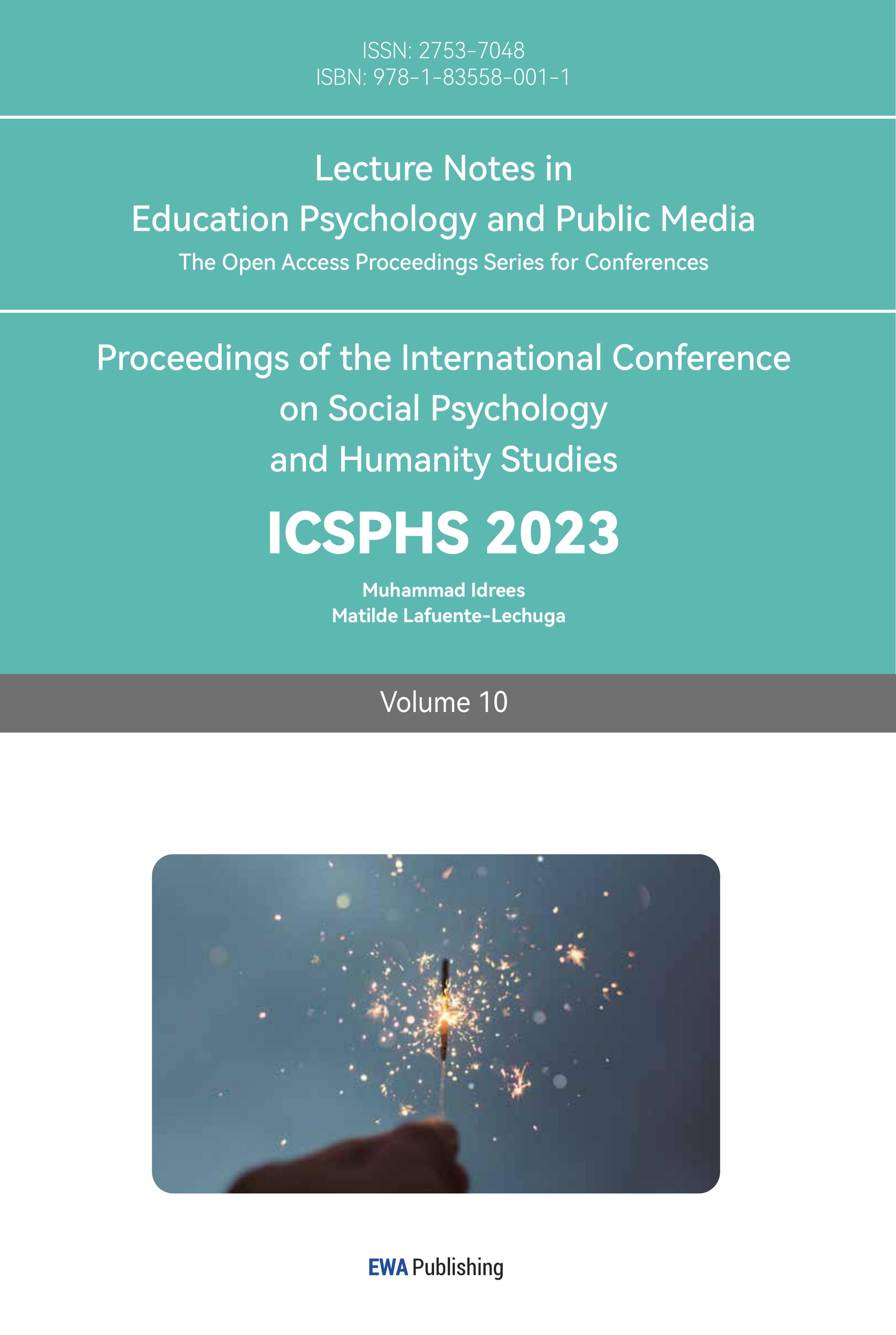References
[1]. Chen Xing, Peng Mingsen, Wang Xianjie. 2012. Landscape Planning and Design of Post-Industrial Sites in China -- A Case Study of Shougang Industrial Zone. Journal of Beijing College of Agriculture, (27)4, 29-31
[2]. Liu Jin. 2020. Revitalizing and Renewing Industrial Relics Based on Spatial Self-Organization Theory: A Case Study of Shenzhen City. Beauty and Time: Urban Edition, 11, 51-52
[3]. Shen, J. 2008. Urban growth and sustainable development in Shenzhen city 1980-2006. Open Environmental Sciences Journal, 2(1).
[4]. Reconstruction and Industrial Upgrading of Old Industrial Zones -- A Series of Studies on the Reconstruction Projects of Old Industrial Zones in Shenzhen Urban Renewal (II)
[5]. Bandarin, F. and Van Oers, R. 2012. The historic urban landscape: managing heritage in an urban century (John Wiley & Sons).
[6]. Zhu Wuyi and Liu Yungang. 2013. Shenzhen OCT-LOFT creative industrial park space production. Journal of South China Normal University: Natural Science Edition, 45(5), 106-111.
[7]. Li Yiwan, Han Jiao, Zhu Xin Yue. 2011. Planning Considerations on the Spatial Development of Shenzhen Creative Industries[C]∥Transformation and Reconstruction. China Urban Planning Annual Conference Proceedings. Nanjing: Southeast University Publishing House, 8379-8388
[8]. O’Connor, J. and Liu, L. 2014. Shenzhen’s OCT-LOFT: Creative space in the City of Design. City, Culture and Society, 5(3), 131-138.
[9]. Jingwei, L. I. N. and Yinan, Z. H. A. N. G. 2017. Research on Open Block's Pedestrian System Based on the Environment-Behavior Theory: A Case Study of Shenzhen Oct-loft. Journal of Landscape Research, 9(4).
Cite this article
Li,S. (2023). Transformation Model and Evaluation of Old Industrial Blocks in Shenzhen: A Case Study of OCT-LOFT. Lecture Notes in Education Psychology and Public Media,10,334-340.
Data availability
The datasets used and/or analyzed during the current study will be available from the authors upon reasonable request.
Disclaimer/Publisher's Note
The statements, opinions and data contained in all publications are solely those of the individual author(s) and contributor(s) and not of EWA Publishing and/or the editor(s). EWA Publishing and/or the editor(s) disclaim responsibility for any injury to people or property resulting from any ideas, methods, instructions or products referred to in the content.
About volume
Volume title: Proceedings of the International Conference on Social Psychology and Humanity Studies
© 2024 by the author(s). Licensee EWA Publishing, Oxford, UK. This article is an open access article distributed under the terms and
conditions of the Creative Commons Attribution (CC BY) license. Authors who
publish this series agree to the following terms:
1. Authors retain copyright and grant the series right of first publication with the work simultaneously licensed under a Creative Commons
Attribution License that allows others to share the work with an acknowledgment of the work's authorship and initial publication in this
series.
2. Authors are able to enter into separate, additional contractual arrangements for the non-exclusive distribution of the series's published
version of the work (e.g., post it to an institutional repository or publish it in a book), with an acknowledgment of its initial
publication in this series.
3. Authors are permitted and encouraged to post their work online (e.g., in institutional repositories or on their website) prior to and
during the submission process, as it can lead to productive exchanges, as well as earlier and greater citation of published work (See
Open access policy for details).
References
[1]. Chen Xing, Peng Mingsen, Wang Xianjie. 2012. Landscape Planning and Design of Post-Industrial Sites in China -- A Case Study of Shougang Industrial Zone. Journal of Beijing College of Agriculture, (27)4, 29-31
[2]. Liu Jin. 2020. Revitalizing and Renewing Industrial Relics Based on Spatial Self-Organization Theory: A Case Study of Shenzhen City. Beauty and Time: Urban Edition, 11, 51-52
[3]. Shen, J. 2008. Urban growth and sustainable development in Shenzhen city 1980-2006. Open Environmental Sciences Journal, 2(1).
[4]. Reconstruction and Industrial Upgrading of Old Industrial Zones -- A Series of Studies on the Reconstruction Projects of Old Industrial Zones in Shenzhen Urban Renewal (II)
[5]. Bandarin, F. and Van Oers, R. 2012. The historic urban landscape: managing heritage in an urban century (John Wiley & Sons).
[6]. Zhu Wuyi and Liu Yungang. 2013. Shenzhen OCT-LOFT creative industrial park space production. Journal of South China Normal University: Natural Science Edition, 45(5), 106-111.
[7]. Li Yiwan, Han Jiao, Zhu Xin Yue. 2011. Planning Considerations on the Spatial Development of Shenzhen Creative Industries[C]∥Transformation and Reconstruction. China Urban Planning Annual Conference Proceedings. Nanjing: Southeast University Publishing House, 8379-8388
[8]. O’Connor, J. and Liu, L. 2014. Shenzhen’s OCT-LOFT: Creative space in the City of Design. City, Culture and Society, 5(3), 131-138.
[9]. Jingwei, L. I. N. and Yinan, Z. H. A. N. G. 2017. Research on Open Block's Pedestrian System Based on the Environment-Behavior Theory: A Case Study of Shenzhen Oct-loft. Journal of Landscape Research, 9(4).









